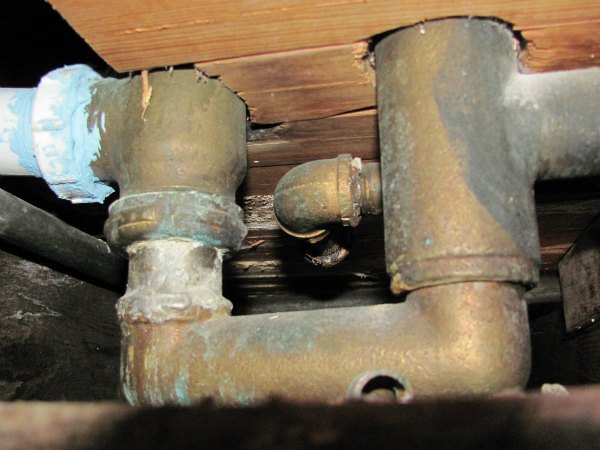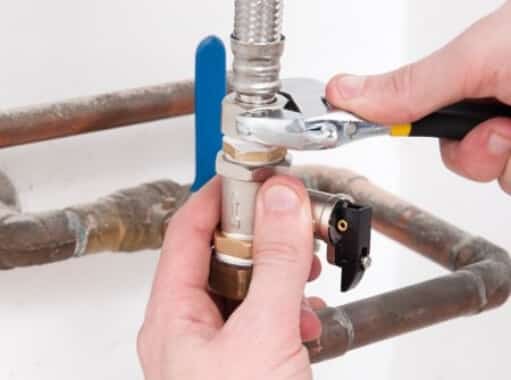Just about every person may have their own unique piece of advice involving Plumbing Issues in Older Properties and How to Fix Them.

Older homes usually feature charm, character, and background, yet they can also bring a host of plumbing issues. Whether you're handling maturing pipes, low tide pressure, or leakages, recognizing exactly how to resolve these typical troubles is vital to keeping a safe and functional home. In this guide, we'll check out the typical pipes obstacles faced by older homes and give functional options to maintain your pipes in leading form.
Comprehending Typical Plumbing Concerns
Aging Pipelines
Among one of the most usual problems in older homes is maturing pipes. Depending upon the period in which your home was built, the pipelines could be made from products that have weakened gradually, such as galvanized steel, cast iron, or even lead. These materials can wear away, end up being brittle, or establish leakages, bring about water damage and potential health hazards.
Low Tide Stress
If you're experiencing low tide pressure, it could be due to mineral deposits, rust inside the pipes, or old components that are no more working successfully. This can be a significant trouble, particularly in areas like showers and sinks.
Dripping Pipes
Leaks are another frequent problem in older homes, commonly brought on by corroded or damaged pipelines. Even small leaks can lead to significant water damages, mold and mildew development, and boosted water expenses otherwise attended to quickly.
Out-of-date Fixtures
Outdated plumbing components such as taps, bathrooms, and showerheads not just look old however might likewise be much less reliable, vulnerable to leakages, or inappropriate with modern plumbing requirements.
Pipe Rust
Rust is a typical problem in older pipelines, especially those made from galvanized steel or actors iron. Rusty pipelines can restrict water flow, trigger staining, and eventually lead to leaks or pipe ruptureds.
Assessing the Condition of Your Plumbing
Examining Noticeable Pipelines
Start by examining any type of visible pipes in your house, such as those in cellars, crawl spaces, or under sinks. Try to find indications of rust, leaks, or corrosion, which can show underlying concerns.
Looking for Leaks
Look for leakages by examining locations around taps, bathrooms, and under sinks. You can additionally check your water meter prior to and after a period of no water use to identify covert leakages.
Water Top Quality Testing
Older pipes can influence the high quality of your water. Conduct a water top quality examination to check for contaminants such as lead, corrosion, or various other impurities that may be introduced by maturing pipes.
Solutions for Usual Pipes Issues
Changing Aging Pipes
If your home has old, deteriorating pipelines, think about changing them with modern materials like copper or PEX. This can be a considerable investment, however it will certainly stop future issues and enhance the safety and reliability of your pipes system.
Repairing Low Tide Pressure
To fix low tide pressure, beginning by cleaning or changing old fixtures and getting rid of mineral accumulation in the pipelines. If the issue persists, it may be necessary to replace sections of rusty pipes.
Fixing and Replacing Dripping Pipelines
For little leaks, you can make use of pipe clamps or epoxy putty as a short-lived repair. Nonetheless, it's best to change leaking pipelines entirely to stay clear of further damage.
Updating Fixtures
Updating old fixtures to contemporary, water-efficient versions can enhance your home's pipes efficiency and decrease water consumption. Try to find components with the WaterSense label for the very best performance.
Handling Pipeline Rust
If your pipelines are corroded, replacing them with corrosion-resistant products like copper, PVC, or PEX is the most effective service. Routine inspections and water top quality maintenance can help stop better corrosion.
When to Call an Expert
While some pipes issues can be managed with do it yourself services, there are times when it's ideal to call in an expert. If you're taking care of major leakages, considerable deterioration, or are unsure regarding the condition of your pipelines, a licensed plumbing technician can give experienced assessment and repair.
Preventive Maintenance Tips
Regular Examinations
Routinely examine your plumbing system for indications of deterioration. Catching problems early can avoid costly repairs down the line.
Water Pressure Regulation
Ensure your water stress is within the suggested variety to avoid worrying your pipelines and components. A plumbing technician can install a stress regulator if needed.
Water Quality Maintenance
Install water filters or conditioners if your water top quality is poor. This can safeguard your pipes and fixtures from damages brought on by tough water or impurities.
Positive Pipeline Replacement
If your home has very old pipes, take into consideration aggressive substitute before major issues arise. This can conserve you from emergency situation repair work and water damage.
Verdict
Managing pipes problems in older homes requires a combination of alertness, preventative maintenance, and timely upgrades. By understanding the usual difficulties and knowing when to look for expert help, you can guarantee your plumbing system stays functional and reliable for several years to find.
Common Plumbing Problems in Older Homes
Older homes have a ton of character from the antique brass faucets, clawfoot tubs, and colorful tile to the Dutch doors, transom windows, and archways, there s a lot to love. Unfortunately, that character often includes old plumbing that s past its prime and isn t fit to support modern appliances.
If you own an older home and are suspicious about strange noises (ghosts?), smells, leaks, or frequent clogs in your plumbing, it's possible that your home s old age is to blame.
Learn more about the most common old house plumbing problems, and what can be done to fix them!
What Are the Most Common Plumbing Problems in Old Houses?
Old, corroded piping. Most older pipes are made of material that corrodes and rusts more easily. Even if over the years some of that piping was replaced with better material, the rest may be damaged or repaired with lower-quality material. Though expensive, it may be the best option to re-pipe your plumbing especially if there s rust or lead in your water. Slow drains. This could be the result of many issues, but most likely because of pipe bellies. These are sags in your drainpipes that happen as your home settles and shifts downward over time, putting pressure on your pipes and creating negative slopes. This can restrict water from flowing correctly through them and result in slow drains. Frequent clogging. As you might expect, pipe bellies can also lead to frequent clogging. Another reason for clogging could be due to buildup over time, or blockages from sediment and root growth. Scheduling a drain inspection and drain unclogging service can eliminate this issue. Damaged or failing sewer lines. Old homes are more likely to have foundational shifts and tree root overgrowth. This can put a lot of pressure on and in your sewer lines, leading to damage. Another common reason for failed sewer lines is because of modern appliance upgrades. Newer appliances put more strain on sewer lines, and if your old pipes aren t equipped to handle this, it can result in damage. If you have any wastewater backup, slow drains, or soft spots in your yard, you may need sewer line replacement. Worn or outdated fixtures. Plumbing fixtures old or new aren t built to last forever. Even if your fixtures seem like they re working well, it s best to check the wear on any internal parts. Minor wear and tear over time can lead to more costly leaks and plumbing issues. Our experts can perform a plumbing inspection for any part of your home s plumbing. Improper installations or repairs. Whether your plumbing was installed a hundred years ago, installed incorrectly, repaired incorrectly, or repaired with outdated materials, this can affect the long-term stability of your plumbing. In older homes especially, having your plumbing inspected is vital to preventing damage. What Are Old Plumbing Pipes Made Of?
Galvanized steel. Most often used between the 1930s and the 1980s, this piping material was discovered later in the 1990s to be prone to rust and corrosion, releasing lead into the water, which is dangerous to consume. Copper. Most homes built around the 1960s are likely to have copper piping. Unlike galvanized steel, copper is one of the most durable materials for plumbing pipes. The issue with this material is the risk of lead, which could be present in the piping itself or the solder applied to the joints and fittings. PVC. This material is still used today and was often used in older homes where piping was replaced because it was easy and inexpensive to install. PVC is also very durable, lead-free, resistant to rust and corrosion, and handles high water pressure well. The downside is that hot water can make it warp. How to Fix Plumbing Problems in Old Homes
Have your plumbing inspected. Before you begin or schedule any type of repair, schedule a plumbing inspection. An expert will be able to properly identify all the issues in your plumbing and the best solution to avoid further damage. Get your plumbing repaired or replaced as needed. Depending on the issues found with your plumbing, you may need minor repairs or larger replacements. Make sure these issues are addressed before you tackle any smaller issues. Remove any clogs or buildup. It s likely your old pipes are clogged with debris, mineral buildup, hair, tree roots, and more. Having your drainpipes cleaned will improve overall drainage and help prevent future leaks. Replace old fixtures. Before replacing any fixtures, check with your local plumber first. Not only can new fixtures strain your old plumbing pipes, but installing them incorrectly can lead to costly damage.

Hopefully you enjoyed our topic on Plumbing Issues in Older Properties and How to Fix Them. Thanks a lot for finding the time to read through our posting. Do you know anybody else who is excited by the niche? Why not share it. Thank you so much for going through it.
Learn More